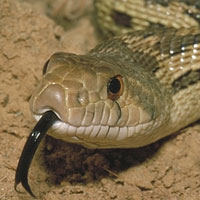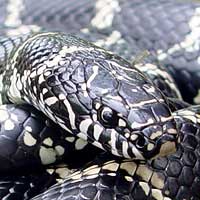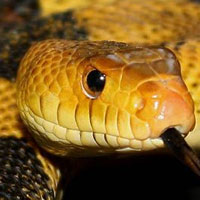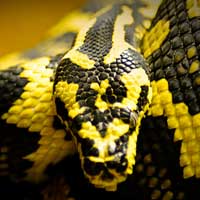Florida Pine Snake: A Complete Care Guide
The Florida Pine Snake is scientifically named Pituophis melanoleucus mugitus. It belongs to the Colubridae family, which is a large group of non-venomous snakes.
Scientific Name: Pituophis melanoleucus mugitus
Snake Family: Colubridae
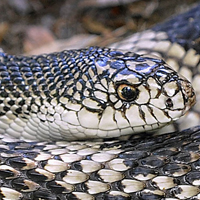
Florida Pine Snake: An Overview
The Florida Pine Snake (Pituophis melanoleucus mugitus) is a large and striking non-venomous snake native to the southeastern United States. Known for its robust size, reaching up to 7 feet in length, and its unique coloration of browns and grays, this species thrives in sandy and forested habitats. With its impressive hissing sound and calm temperament, the Florida Pine Snake is both fascinating to observe and rewarding to care for in captivity. This guide explores its habitat, diet, behavior, and more.
Discovering the Natural Habitat of the Florida Pine Snake
The Florida Pine Snake inhabits sandy, well-drained regions in the southeastern United States, with a preference for open forests and pine flatwoods. Understanding its natural environment is key to replicating these conditions in captivity.
| Habitat Feature | Description |
|---|---|
| Geographic Range | Southeastern United States, primarily in Florida, southern Georgia, and southern Alabama |
| Preferred Environment | Pine forests, sandy dunes, and grasslands |
| Climate | Warm and humid with well-drained sandy soils |
What Does the Florida Pine Snake Eat?
The Florida Pine Snake is a carnivorous species that preys on small mammals, birds, and reptiles in the wild. Replicating this diet in captivity is crucial for their health and well-being.
- Juveniles: Feed on pinky mice or small rodents every 5-7 days.
- Adults: Feed on adult mice, rats, or small birds every 7-10 days.
- Prey Size: Ensure prey is no larger than 1.5 times the widest part of the snake’s body.
- Hydration: Provide fresh water daily for drinking and soaking.
Offering prey that mimics their natural diet, such as thawed frozen rodents, ensures nutritional balance. Avoid overfeeding to prevent obesity.
Understanding the Behavior and Temperament of the Florida Pine Snake
The Florida Pine Snake is known for its unique defensive behaviors, including loud hissing and tail vibrations. However, it is generally non-aggressive and adjusts well to handling with time.
- Defensive Behaviors: Emits a loud hissing sound and may vibrate its tail when threatened.
- Activity Level: Diurnal, primarily active during the day.
- Interaction with Humans: Can become docile with regular, gentle handling.
- Burrowing: Often seen burrowing in loose soil, mimicking natural behavior.
While its hissing may seem intimidating, the Florida Pine Snake rarely bites and can become a calm and trusting pet.
How to Ensure a Healthy and Long Life for the Florida Pine Snake
With proper care, the Florida Pine Snake can live up to 15-20 years in captivity. Monitoring their health and maintaining an optimal environment are critical for their longevity.
| Health Issue | Symptoms | Prevention |
|---|---|---|
| Respiratory Infections | Wheezing, open-mouth breathing | Maintain proper humidity and temperature |
| Shedding Problems | Incomplete or stuck sheds | Provide adequate humidity levels |
| Parasites | Visible mites, scratching | Clean and disinfect the enclosure regularly |
Reproductive Traits of the Florida Pine Snake
The Florida Pine Snake is oviparous, laying eggs instead of giving birth to live young. Successful breeding in captivity requires a good understanding of their reproductive cycle.
- Mating Season: Spring to early summer.
- Clutch Size: Typically 4-12 eggs per clutch.
- Incubation Period: Approximately 60-70 days at 82-86°F.
- Hatchling Care: Provide appropriately sized prey for newborn snakes after their first shed.
Breeding Florida Pine Snakes in captivity helps preserve this fascinating species and enhances the reptile hobby.
How to Handle and Care for the Florida Pine Snake
Caring for the Florida Pine Snake requires a well-maintained enclosure, regular feeding, and gentle handling. Their hardy nature makes them a great choice for both beginners and experienced keepers.
- Enclosure Size: Provide at least a 4x2x2 ft enclosure for adults.
- Substrate: Use loose, burrow-friendly substrates like aspen shavings or cypress mulch.
- Temperature Gradient: Maintain a gradient of 75-85°F, with a basking spot at 90°F.
- Humidity: Keep humidity levels around 40-50% to mimic their natural environment.
- Hiding Spots: Include multiple hides and burrowing areas for security.
- Regular Handling: Handle gently and regularly to build trust and reduce stress.
Providing proper care ensures a healthy and stress-free life for the Florida Pine Snake, making them a rewarding pet for reptile enthusiasts.










